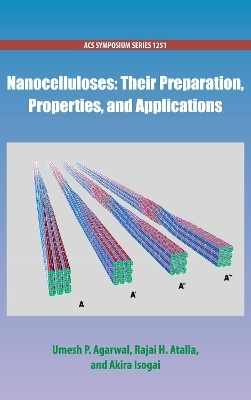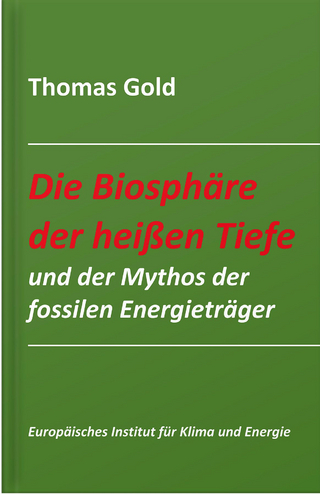
Nanocelluloses: Their Preparation, Properties, and Applications
Oxford University Press Inc (Verlag)
978-0-8412-3218-1 (ISBN)
Although occurrence of nanoscale aggregates of cellulose upon acid hydrolysis was recognized in the middle of the past century, characterization of nanoscale phenomena was limited. As methods for observing and characterizing such systems have been developed, the cellulose science community has applied them. Much progress has been made in the past two decades. Nanocelluloses are the point of focus for many research programs in laboratories around the world. This is
because of the abundance of celluloses as the primary structural components in plants, as well as their unique properties. They allow preparation of nanocelluloses of multiple forms with properties that can have significant commercial value.
The diversity of the contents in this book reflects the much wider range of parallel investigations ongoing in many academic, industrial, and national laboratories devoted to both agriculture and manufacturing. The challenges confronting the cellulose science community are well reflected in the collection of investigations reported in these proceedings. The chapter contributions represent many different arenas wherein efforts are currently invested in both basic and applications explorations.
They also suggest the wide range of questions that have arisen regarding nanocelluloses. The intent has been to be representative rather than comprehensive regarding ongoing efforts.
Umesh P. Agarwal is currently employed as a senior scientist at the Forest Products Laboratory, USDA Forest Service, Madison WI. In 1979, he received his Ph.D. in Chemistry from the Indian Institute of Technology (Kanpur, India). Subsequently, as a postdoctoral fellow, he carried out research at various institutions in England, Germany, and the United States. He has published ~ 100 papers in peer-reviewed journals, written several book chapters, and made significant contributions at national and international conferences/meetings. Rajai H. Atalla received a Ph.D. from the University of Delaware in Chemical Engineering and Chemical Physics. He has served as Professor of Engineering and Chemical Physics at the Institute of Paper Chemistry in Appleton, Wisconsin. In 1989, he became Head of Chemistry and Pulping Research at the Forest Products Laboratory (FPL) in Madison, Wisconsin and Adjunct Professor of Chemical Engineering at the University of Wisconsin.He has well more than 250 peer-reviewed publications, book chapters, and patents. Akira Isogai graduated from The University of Tokyo in 1980 and received his Ph.D. from its Graduate School of Agriculture in 1985. After a year as a Postdoctoral fellow the Institute of Paper Chemistry, he was appointed Assistant Professor at The University of Tokyo. In 2003 he became Professor in the Department of Biomaterial Sciences at The University of Tokyo. He pioneered the study of nanocelluloses and their TEMPO oxidation beginning in 1995 and is the leading contributor in the field, which is reflected in more than 500 publications and 130 patents. He is president of The Cellulose Society of Japan, an Associate Editor of Cellulose (Springer), and a member of the Advisory Editorial Board of Biomacromolecules (ACS) and other scientific journals.
Preface
1. The Nanostructures of Native Celluloses, Their Transformations upon Isolation, and Their Implications for Production of Nanocelluloses
2. Comparative Assessment of Methods for Producing Cellulose I Nanocrystals from Cellulosic Sources
3. Towards an Understanding of Cellulose Microfibril Dimensions from TEMPO-Oxidized Pulp Fiber
4. Raman Spectroscopy in the Analysis of Cellulose Nanomaterials
5. Internal Structure of Isolated Cellulose I Fibril Aggregates in the Water Swollen State
6. Rheological Properties of Jute-Based Cellulose Nanofibers under Different Ionic Conditions
7. Rice Straw Nanocelluloses: Process-Linked Structures, Properties, and Self-Assembling into Ultra-Fine Fibers
8. Branched Structures of Softwood Celluloses: Proof Based on Size-Exclusion Chromatography and Multi-Angle Laser-Light Scattering
9. Tissue Engineering Using Plant-Derived Cellulose Nanofibrils (CNF) as Scaffold Material
10. TEMPO/Laccase/O2 Oxidation of Native Cellulose for the Preparation of Cellulose Nanofibers
11. Nanocellulose: Common Strategies for Processing of Nanocomposites
12. Experiences with Scaling-Up Production of TEMPO-Grade Cellulose Nanofibrils
Editors' Biographies
Indexes
| Erscheinungsdatum | 21.06.2018 |
|---|---|
| Reihe/Serie | ACS Symposium Series |
| Zusatzinfo | 81 |
| Verlagsort | New York |
| Sprache | englisch |
| Maße | 163 x 232 mm |
| Gewicht | 534 g |
| Themenwelt | Naturwissenschaften ► Biologie ► Biochemie |
| Naturwissenschaften ► Chemie ► Analytische Chemie | |
| Naturwissenschaften ► Chemie ► Physikalische Chemie | |
| ISBN-10 | 0-8412-3218-0 / 0841232180 |
| ISBN-13 | 978-0-8412-3218-1 / 9780841232181 |
| Zustand | Neuware |
| Informationen gemäß Produktsicherheitsverordnung (GPSR) | |
| Haben Sie eine Frage zum Produkt? |
aus dem Bereich


